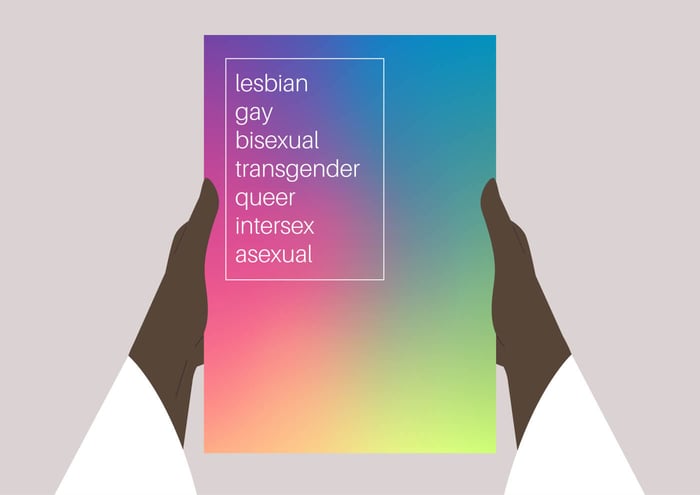
The Gender Spectrum
A Brief History
To be clear, sex and gender are often used interchangeably. But sex is biological (assigned at birth) and gender is social presentation, which may be more fluid than man or woman. While there is sometimes overlap, this is not always the case, nor is it as new as it may appear. Some even argue that sex and gender are both social constructs, meaning they can and do change.
Although Western culture seems to have had a relatively recent shift from two binary genders (man and woman), this shift is not recent for many other cultures. Depending on who you ask, gender has been nonbinary for thousands of years, including hijras of India, two- spirit Native Americans, and beyond.
Gender is a spectrum with many ways to describe it. Understanding the language surrounding it can help demystify the concept and help you to support others who may identify differently from you.
Part of the Discourse
So, how do we account for this shift? In part, we can point to several waves of feminism, which has also shifted over time. Others took note, and later branched off into LGBT+ studies and queer studies. The research, work, and activism earned a seat at the table of discussion.
Being part of the discourse is the first step to shifting the status quo. Some try to name all sixty-eight, eighty-one, or any number of genders. This can seem overwhelming and complicated to those who are new to this way of thinking. However, there is no fixed, agreed upon number which is what makes it a changing spectrum. What is important is being included in the conversation to be seen and recognized.
Being part of the conversation is only the beginning. Some will fight change and gatekeep who gets to go in which bathroom, and others will adapt and accept change with open arms. Bentley University also points out that gender neutral, or family bathrooms are important beyond gender. Single parents with a child, ability and space, or needing more privacy for a number of reasons are listed. It is safe to say this is a direct result of bringing gender to the conversation.

Terms to Know
While it would be impossible to list every possible gender here, some of the resources listed have a more exhaustive approach. Be mindful that you may not be able to “gender” someone just by looking, and you may be surprised.
Cis: your sex assigned at birth, and gender are aligned.
AFAB/ AMAB: These are acronyms meaning Assigned Female or Male at Birth, respectively.
Transgender: This term used to be transsexual and is now controversial. The preferred term is transgender, an umbrella term to describe someone who identifies with a gender different than the one assigned at birth. This term does not explain if the person is transitioning, has or is using hormone therapy, has had any gender reaffirming surgeries, or has any plans to do so.
Androgyne: Someone who presents in a way that is gender-neutral, androgynous, or has both masculine and feminine characteristics.
Genderqueer: Someone who’s gender identity cannot be categorized as only masculine or feminine, and they express their gender in various ways.
Genderfluid: Someone who experiences gender as fluid or changes over time. It can be from moment to moment, day to day, month to month, etc.
Gender Neutral Pronouns: These pronouns can be used by any gender to convey how they would like to be referred to. While they/them/theirs have become most common, variations of ze and xe are also gender neutral.
Pronoun Etiquette
While sharing pronouns isn’t completely normalized yet, it may seem awkward to ask. Some social settings will include pronouns in introductions, and are options to include on social media. It might even come with a learning curve for some to remember and conjugate they/them/theirs at first. So, it is okay to practice.
You may want to share yours first, “Hi my name is Sara and I use she/her pronouns. How may I refer to you?” Remember you are not asking about someone’s gender or even private information, only how they prefer to be addressed. Despite how you feel about asking, it is respectful if you do not know, and treats others with dignity.




